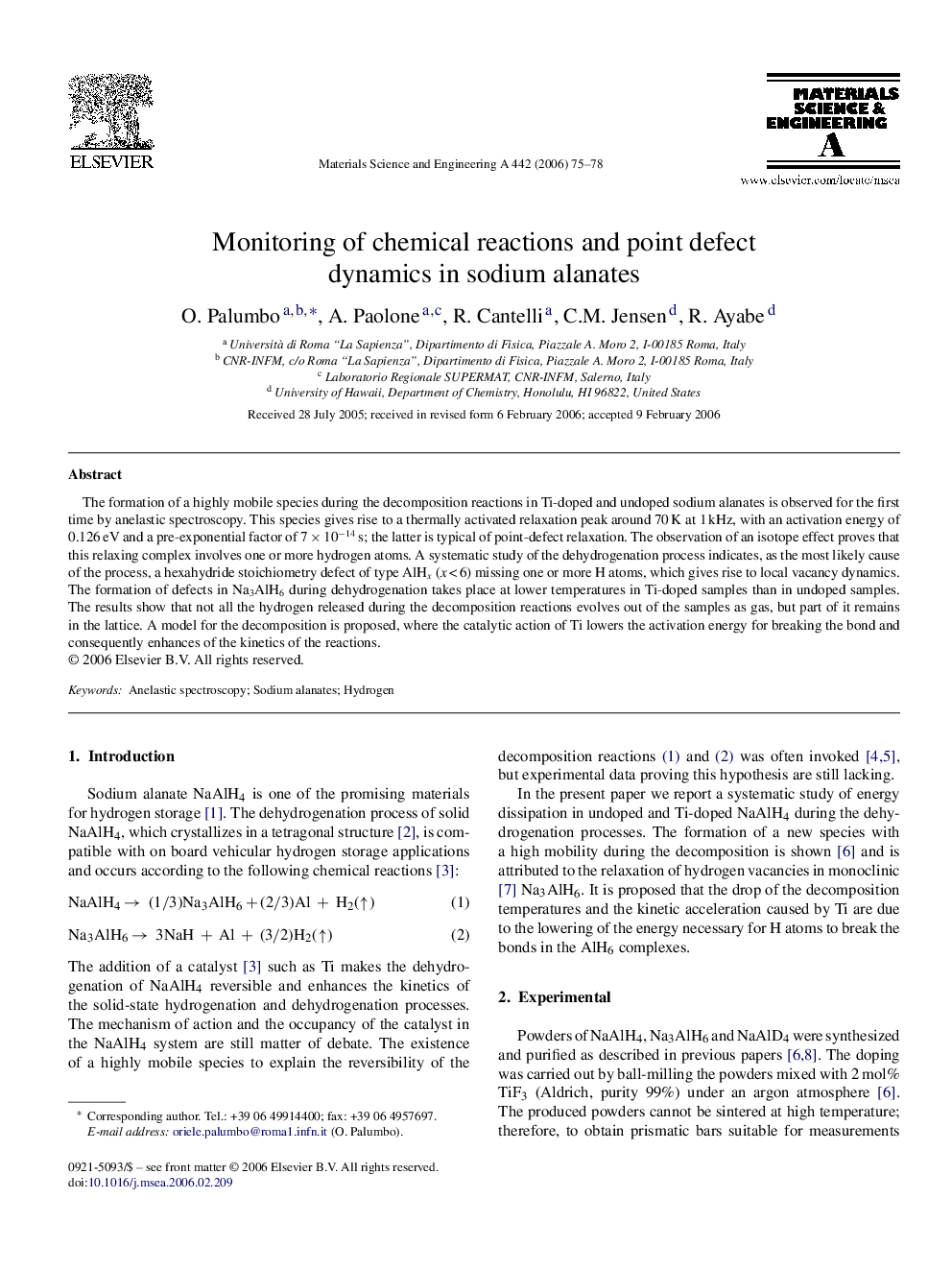| Article ID | Journal | Published Year | Pages | File Type |
|---|---|---|---|---|
| 1584615 | Materials Science and Engineering: A | 2006 | 4 Pages |
The formation of a highly mobile species during the decomposition reactions in Ti-doped and undoped sodium alanates is observed for the first time by anelastic spectroscopy. This species gives rise to a thermally activated relaxation peak around 70 K at 1 kHz, with an activation energy of 0.126 eV and a pre-exponential factor of 7 × 10−14 s; the latter is typical of point-defect relaxation. The observation of an isotope effect proves that this relaxing complex involves one or more hydrogen atoms. A systematic study of the dehydrogenation process indicates, as the most likely cause of the process, a hexahydride stoichiometry defect of type AlHx (x < 6) missing one or more H atoms, which gives rise to local vacancy dynamics. The formation of defects in Na3AlH6 during dehydrogenation takes place at lower temperatures in Ti-doped samples than in undoped samples. The results show that not all the hydrogen released during the decomposition reactions evolves out of the samples as gas, but part of it remains in the lattice. A model for the decomposition is proposed, where the catalytic action of Ti lowers the activation energy for breaking the bond and consequently enhances of the kinetics of the reactions.
